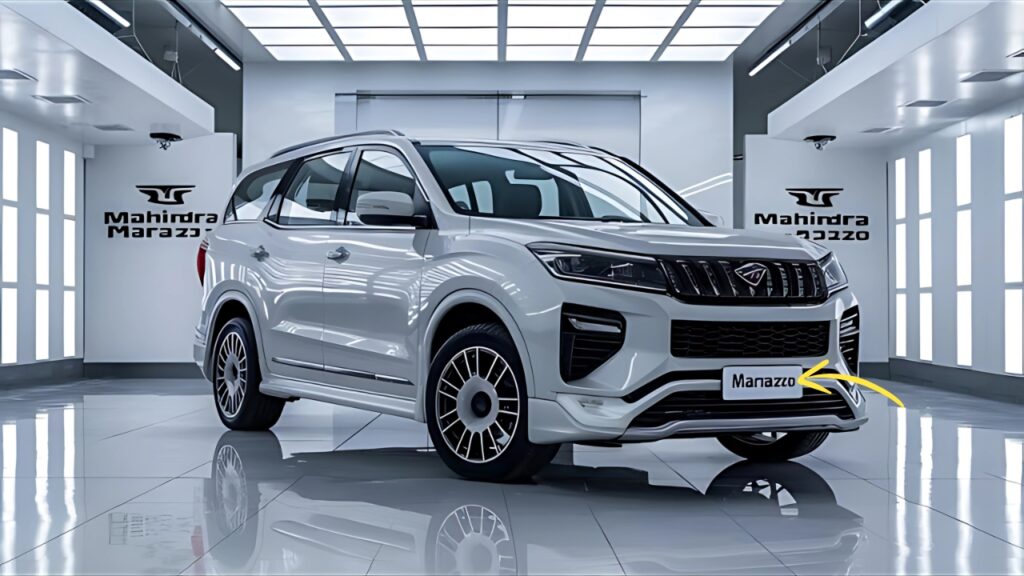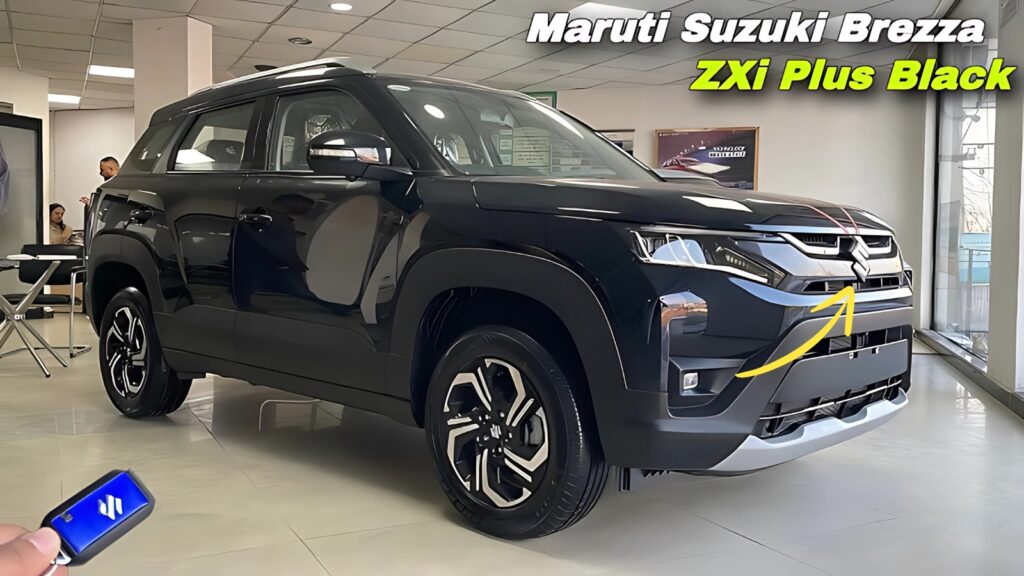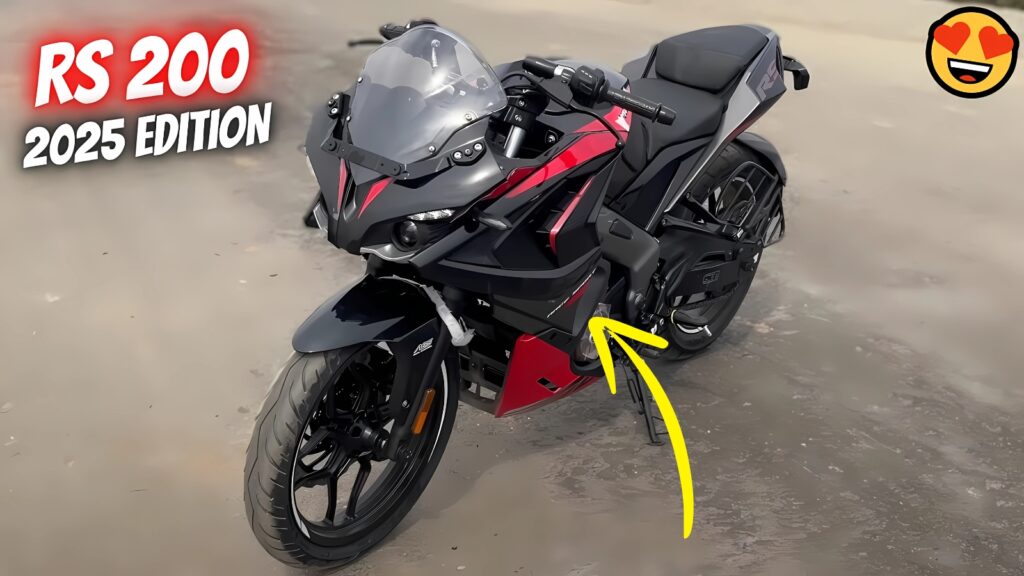Mahindra Marazzo : The Indian automotive landscape witnesses the conclusion of another ambitious chapter as the Mahindra Marazzo prepares for its final bow in March 2025. After six years of attempting to carve out space in the competitive MPV segment, this uniquely designed family carrier has become a casualty of changing consumer preferences and relentless competition from established players like Toyota Innova and Maruti Suzuki Ertiga.
Design Philosophy That Dared to be Different
When Mahindra unveiled the Marazzo in September 2018, it represented a bold departure from conventional MPV aesthetics. The vehicle’s design drew inspiration from nature’s most efficient predator – the shark – leading to the distinctive styling elements that set it apart from boxy, utilitarian competitors. The name itself, derived from the Basque word for shark, reflected Mahindra’s ambition to create something genuinely distinctive in a segment known for conservative design approaches.
The front fascia incorporated shark-inspired elements including a prominent grille with tooth-like patterns, aggressive fog lamp housings, and sleek projector headlamps that created a menacing yet sophisticated appearance. This design philosophy extended throughout the vehicle, with flowing lines that transitioned smoothly from the bonnet through the windshield to create a more dynamic silhouette than typical MPV proportions would suggest.
Measuring 4,585mm in length, 1,866mm in width, and 1,774mm in height, the Marazzo offered commanding road presence while maintaining manageable proportions for urban navigation. The 2,760mm wheelbase provided substantial interior space, particularly benefiting second and third-row passengers who often struggle with cramped accommodations in competing vehicles.
Engineering Excellence That Promised Much
Under the hood, the Marazzo featured Mahindra’s 1.5-liter turbocharged diesel engine, generating 123PS at 3,500 rpm and 300Nm of torque at 2,500 rpm. This power plant represented a significant advancement over previous Mahindra MPV offerings, providing adequate performance for family hauling duties while maintaining reasonable fuel efficiency claims of 17.3 kmpl.
The engine incorporated modern technologies including an ‘Eco’ mode that reduced output to 100PS for improved fuel economy during relaxed driving conditions. This dual-personality approach demonstrated Mahindra’s understanding of Indian driving patterns, where efficiency often takes precedence over outright performance.
However, the powertrain’s limitation to a six-speed manual transmission proved increasingly problematic as competitors began offering automatic options. This single transmission choice significantly restricted the Marazzo’s appeal among urban buyers increasingly seeking convenience features that simplify daily commuting challenges.
Premium Interior Philosophy Meets Practical Needs
The Marazzo’s cabin design embraced a lounge-inspired philosophy, creating environments that prioritized passenger comfort over utilitarian simplicity. Premium materials appeared throughout the interior, including soft-touch dashboard surfaces, quality door panel finishes, and thoughtfully designed center console layouts that elevated the overall ownership experience.
Seating configurations included both seven and eight-seat arrangements, providing flexibility for different family compositions and usage patterns. The third-row accommodation proved genuinely usable for adult passengers, addressing a common complaint about competing MPVs where rear seating felt more suitable for children or emergency use only.
Feature integration included a seven-inch touchscreen infotainment system with Android Auto and Apple CarPlay compatibility, automatic climate control, height-adjustable driver seats, and remote keyless entry. While comprehensive, this feature set gradually fell behind more aggressive competitors who continuously upgraded their offerings with contemporary technologies.

Safety Credentials That Set Industry Benchmarks
Perhaps the Marazzo’s most significant achievement lay in safety performance, where it earned a prestigious four-star rating from Global NCAP crash tests. This accomplishment positioned it as India’s safest MPV during its active production period, demonstrating Mahindra’s commitment to passenger protection in a segment where safety often received secondary consideration.
The safety architecture incorporated multiple airbags, electronic stability program (ESP), and robust body construction that exceeded many competitors’ protection levels. This emphasis on occupant safety reflected changing consumer priorities and regulatory expectations that increasingly emphasized crash protection standards.
Market Challenges That Proved Insurmountable
Despite its numerous strengths, the Marazzo struggled against entrenched competition and evolving market dynamics. Toyota’s Innova continued dominating the premium MPV segment through established reliability reputation, extensive service network, and strong resale value proposition that proved difficult to challenge.
Competition from Maruti Suzuki’s Ertiga and subsequent XL6, along with Kia’s Carens entry, created pricing pressures that squeezed the Marazzo’s market positioning. These competitors offered petrol engine options, automatic transmission choices, and more frequent updates that maintained contemporary appeal.
Sales figures reflected these market realities starkly. While Mahindra achieved initial success with the Marazzo, momentum gradually declined from early monthly averages of 640 units to recent figures showing barely 34 units per month. This dramatic reduction demonstrated how quickly consumer preferences can shift in competitive segments.
Production Conclusion and Market Impact
Current reports indicate that Marazzo production will conclude in March 2025, marking the end of Mahindra’s presence in the MPV segment. This decision transforms Mahindra into an SUV-focused manufacturer, aligning with broader market trends that favor higher-riding vehicles over traditional MPV configurations.
The discontinuation leaves current Marazzo owners with concerns about long-term parts availability and service support, though Mahindra’s established service network should continue providing maintenance assistance for existing vehicles. Dealer-level discounts currently available on remaining inventory provide opportunities for buyers seeking value-oriented family transportation.
Bajaj Pulsar RS 200 – Full dangerous design bike launch with powerful engine
Legacy Assessment and Industry Implications
The Marazzo’s story illustrates broader challenges facing automotive manufacturers attempting to disrupt established segment hierarchies. Despite offering genuine innovations in design, safety, and interior quality, success requires sustained marketing investment, continuous product updates, and patience during market development phases.
Mahindra’s experience with the Marazzo provides valuable lessons about consumer behavior in the MPV segment, where practical considerations often override aesthetic or technical innovations. The dominance of Toyota and Maruti Suzuki reflects decades of reputation building that newer entrants struggle to overcome without significant long-term commitment.
Mahindra Marazzo Future Implications for Indian MPV Market
The Marazzo’s discontinuation further consolidates the MPV segment around established players, potentially limiting future innovation as competition decreases. This concentration could benefit existing players through reduced competitive pressures while potentially disadvantaging consumers through fewer choice alternatives.
For Mahindra, the focus shift toward SUVs aligns with current market preferences where higher ground clearance, commanding driving positions, and rugged aesthetics prove increasingly popular. The company’s success with XUV700, Scorpio-N, and upcoming electric vehicles suggests this strategic repositioning reflects sound business judgment.
The Mahindra Marazzo’s journey from ambitious shark-inspired challenger to discontinued model represents both the opportunities and risks inherent in automotive innovation. While its immediate market impact proved limited, the vehicle’s emphasis on safety, design differentiation, and premium features contributed to raising overall segment standards that benefit all consumers.
As the final Marazzo units roll off production lines in early 2025, they represent the conclusion of Mahindra’s MPV ambitions and the company’s evolution toward SUV specialization in an increasingly competitive Indian automotive market.


